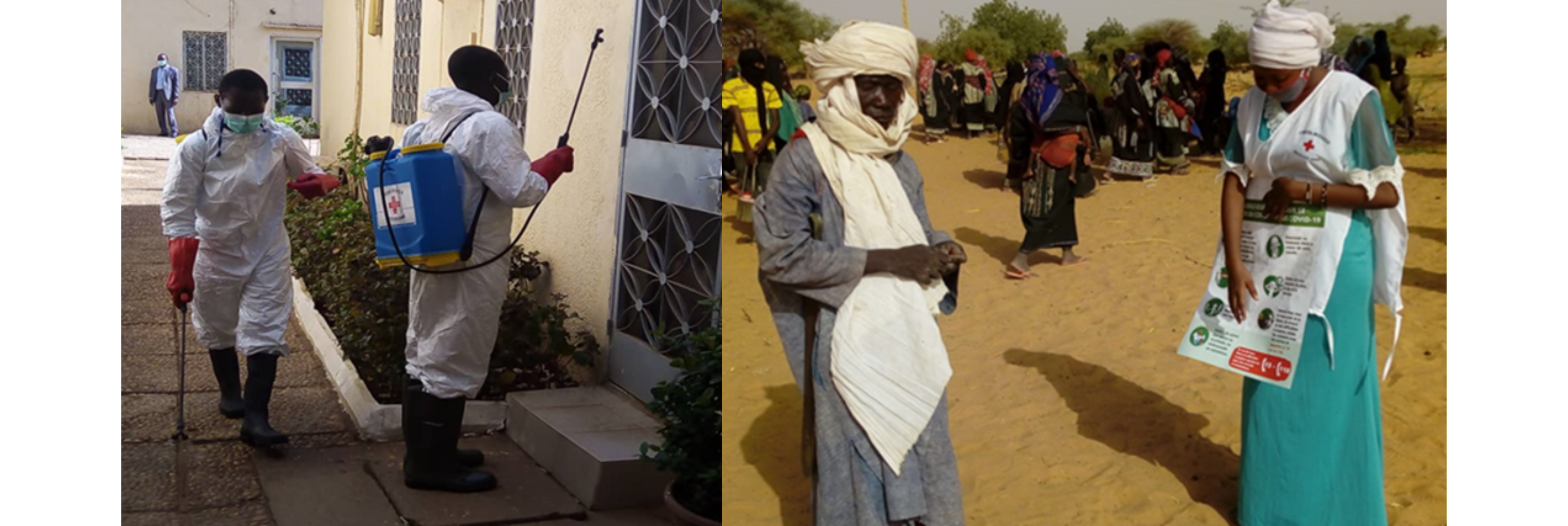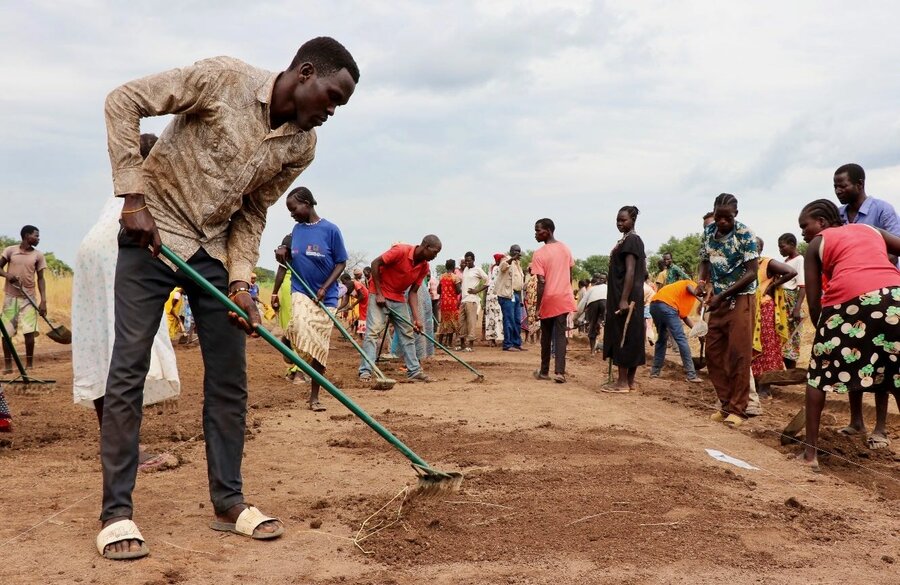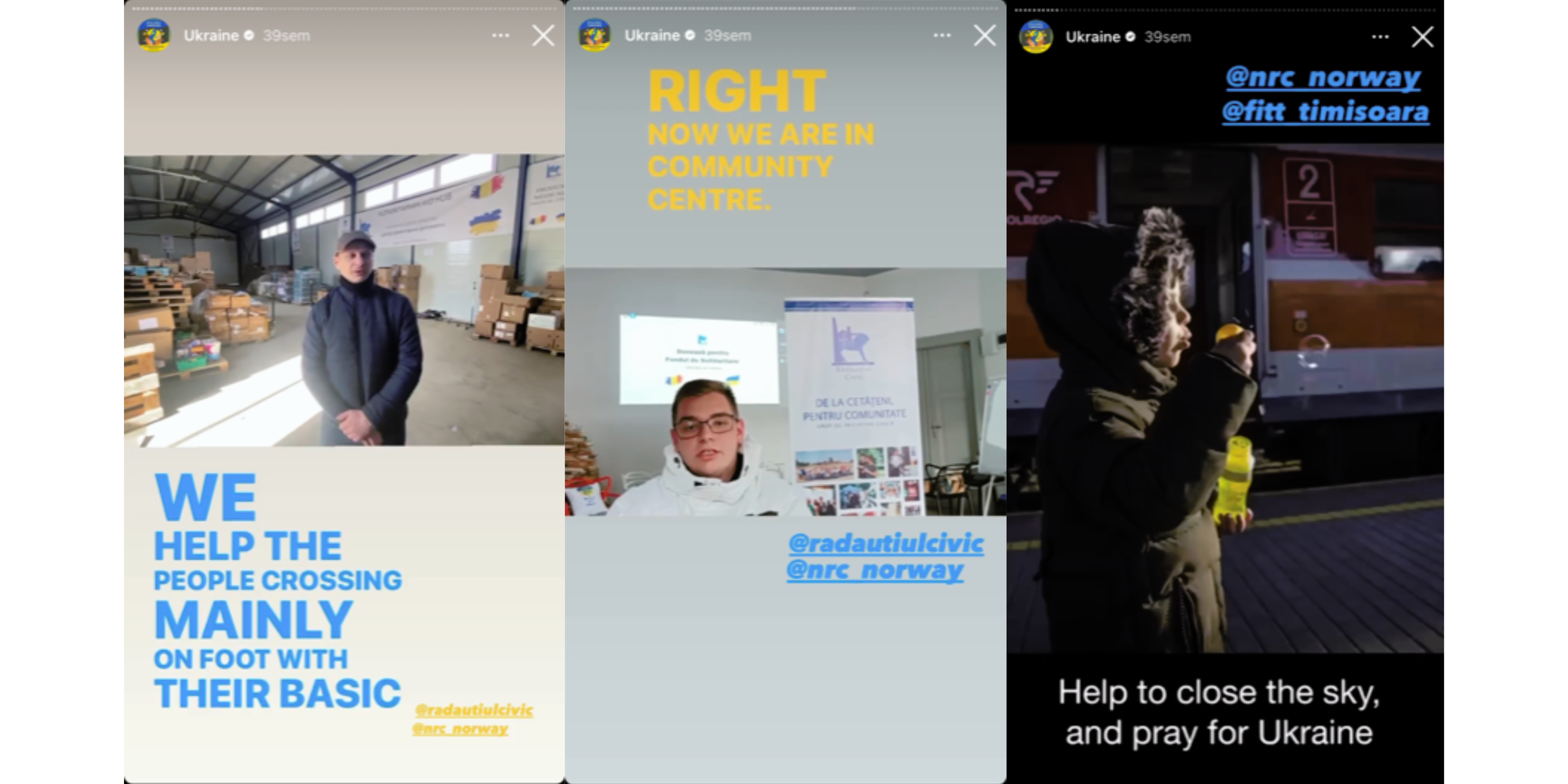The Grand Bargain in practice: How do humanitarian organisations ensure affected people are part of the decision-making?

What if affected people take a key role in the response? “Nothing about us without us” has increasingly become a principle and norm of the humanitarian response, acknowledging that affected people should play a key role in response planning and decision making.
As part of the Grand Bargain’s commitments, participation is the one, which can shift the power to the communities. In humanitarian operations, the Signatories have been implementing their commitments through different approaches: examples from various actors, such as the UNRWA, International Committee of the Red Cross, the World Food Programme, and the Norwegian Refugee Council have been developing community-driven programmes showing evidence that participation is happening.
From commitment to action
The commitment to include the people affected by humanitarian crises and their communities into the decision-making processes, commonly defined as “Participation Revolution”, has been elevated as one of the enabling priorities of the Grand Bargain 2.0, in June 2021.
The Signatories, which include donors, UN agencies, INOGs, RCRC, local and national NGOs, have made this commitment to better understand the priorities and the needs of affected people and to integrate meaningful participation into practice in order to ensure a relevant, timely, effective and efficient humanitarian response
The progress of the individual Signatories’ and the Grand Bargain workstream’s efforts (workstream 6) is monitored and captured annually in the Grand Bargain Annual Independent Report. The 2022 report highlighted efforts made by multiple actors having some incremental impact in empowering local leadership.
Some examples include a UNRWA project developed during the pandemic to enable telephone access for refugees to health professionals. This project was a direct response to feedback from people in need, particularly women, for whom the service was more efficient in this circumstance than a face-to-face appointment. Also, the survivor - and community-led response (SCLR) approach – developed by a collective of NGOs (DanChurchAid, ACT Church of Sweden, and Christian Aid) – and FAO’s Dmitra clubs to support local communities to design responses to their own needs. The report describes evidence that aid organisations are using different approaches to inform programming decisions, or programme and project design phases.
What does this mean in practice? What does participation revolution look like on the ground?
Already in 2021, we highlighted the efforts made by the ICRC to support the National Red Cross and Red Crescent Societies to prepare themselves through the Safer Access Framework (SAF) to respond effectively to humanitarian needs in complex contexts. The SAF framework played a key role for humanitarian workers to work and engage with communities.

This was particularly successful during the pandemic in Niger, granting a secure access to the National Red Cross volunteers, who were already trained and knew how to assess and react and prepare the communities to the pandemic, reaching a lot of communities across the country.
However, participation can take many shapes depending on the context of the country, and the specific needs of the communities. Therefore, the ICRC has also been scaling up its beneficiary feedback channels through its Community Contact Centres, through which people are able to provide feedback on ICRC programmes or seek information on existing services.
Communities in the driving seat to build their food security resilience in South Sudan
Another example, with a different approach, is the World Food Programme (WFP) which has been empowering people affected by food insecurity and putting them in the driving seat of the response.

Since 2013, the Community-based Participatory Planning (CBPP) methodology has been used to allow communities, national NGOs and government staff to discuss the challenges they face and required solutions while defining the priority activities, which can include land rehabilitation, water management, feeder roads, market infrastructure, vegetable gardens, and more.
Hence, the programme response is tailored to local requirements and priority needs and improves the community’s food security. The activities underlined in the community action plans link short and long-term interventions to tackle the underlying causes of food insecurity by reducing disaster risk, building resilience against shocks and helping to change the conditions that cause communities to resort to violence.
“Community-based participatory planning, particularly for Food Assistance for Assets (FFA) activities, is important because it allows communities to come together to discuss the challenges they face and identify local solutions that build their resilience and bring to life their development vision for their communities. We’ve seen this, for example, in Terekeka County, where a rehabilitated shallow well enabled a community to access clean drinking water all year round, and in Panyinjar County, where a rehabilitated flood dyke protected a community against the negative impact of flooding on their crops, homes, and lives. This planning approach is increasingly crucial in communities that face recurrent conflict and climate related shocks.”
- WFP’s Deputy Country Director for Operations, Adeyinka Badejo-Sanogo

The result of this approach in South Sudan was an effective participation process where men and women affected by food insecurity were empowered and less reliant on humanitarian assistance as the availability of adequate nutritious food increased. This happened through a community-driven participatory planning exercise which led to the farming of 45,000 hectares of crop farms and vegetable gardens.
Humanitarian organisations can only integrate and implement participation in their programmes by having appropriate support and incentives from their donors. Collective efforts of the humanitarian community are needed to achieve effective participation and a better humanitarian response.
Youth at the forefront of humanitarian action in the Ukraine refugee response
The Norwegian Refugee Council’s (NRC) Youth Solidarity project in Romania and Moldova highlights the importance of working with and for youth in humanitarian action. The project, in partnership with local youth-led organisations, engages Ukrainian youth who have fled the war to access social engagement, education and livelihood opportunities, improving their overall wellbeing.

“NRC believes that wherever they settle, displacement affected youth have a role to play in driving their communities forward. NRC continues to shift the participation of youth in our programmes from consultation, to collaboration and ideally youth-led. This approach is in line with the IASC Guidelines for Working with and for Young People in Humanitarian and Protracted Crisis”
- Craig Dean, NRC Youth Education & Training Global Specialist.

Since the February 2022 escalation of the international armed conflict in Ukraine, many young people are leading the humanitarian response inside the country and in neighbouring countries, including in Romania and Moldova, providing front line services to refugees arriving, such as food and non-food items and psychosocial recreational activities for displaced children and adolescent youth. To strengthen the organisational capacity of youth in these contexts NRC, through this project, is providing skills training, mentoring, and funding.
So far, the project has provided Euro 350,000 to Romanian and Moldovan youth-led organisations (National Foundation Romania, National Youth Council of Moldova, and Romanian Angel Appeal Foundation) who hire Ukrainian and Romanian youth project coordinators to identify Ukrainian youth in the local communities, conduct assessments and design and deliver projects which meet their needs and priorities.

As a result, displacement affected youth have been able improve their wellbeing by connecting with their peers in safe spaces and provide psychosocial support to each other to help process the traumatic events they have witnessed during the conflict.
In Romania, projects include ‘Ted-Talk’ social events for Ukrainian youth to tell their stories, while in Moldova youth have arranged local Christmas markets to sell their home-made products. A ‘Youth Resolution’, developed with Ukrainian youth and endorsed by all youth civil society organisations in Moldova, was presented to the Moldovan Prime Minster which contributed to an Adolescent and Youth Taskforce being established to coordinate and mobilise additional humanitarian support for Ukrainian youth.
In collaboration with the Women’s Refugee Commission, NRC are partnering with the Global Refugee Youth Network to go one step further, establishing a Ukrainian Refugee Youth Action Fund, to provide funding and mentoring directly to Ukrainian refugee youth for their own community projects, in rural and urban settings, across Moldova, Romania and Poland.
An evolution of participation rather than a revolution
According to ALNAP’s report, we can speak today about an evolution of participation rather than a revolution. Through the Grand Bargain and other fora, such as the Inter-Agency Standing Committee (IASC), participation of affected people has today a central role in the way of thinking and doing humanitarian work, and the examples from ICRC, WFP and NRC are an illustration of this.
However, even if there is visible progress in operational contexts, we can speak today more of a participation evolution, rather than a revolution, as was originally envisaged. There remains space for improvement on this front, and the Grand Bargain Signatories are encouraged to reflect how their institutions can contribute to the implementation of the commitments on participation of affected people, including by replicating and scaling up existing good practices.
